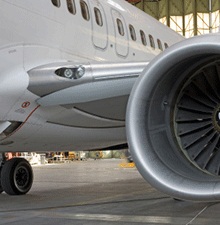As passenger numbers increase globally, airlines have struggled to compete and manage passenger volumes.
Although international travel to Australia has increased at a slow rate over the past five years, IBISWorld expects that it will increase at an annualised 3.7 per cent over the five years ahead.
As a result, the Australian aviation industry, like that of other developed nations, potentially faces supply constraints. In an effort to pre-empt increased festive season travel, Boeing increased the delivery and production rate of its 787 Dreamliner prior to the New Year, which was well received by airlines around the world. However, the grounding of a Japan Airlines Boeing 787 in early January due to a fuel leakage calls into question the ability of aircraft manufacturers to cater for the growing passenger load worldwide.
The changing dynamics of the aviation industry have called for advancements in aircraft manufacturing. This has flowed on from the recovery of demand in international travel to Australia through the rise of Asian economies and the continued integration of Australia as a dominant nation in the Asia-Pacific. Undercapacity is expected as airlines are hard-pressed to meet returning demand, especially as many divested and scrapped aircraft during the global financial crisis.
While Australia does not engage in the domestic assembly of aircrafts, it does manufacture key components and is a base for repair and maintenance. This has tied the Australian aircraft manufacturing industry closely to the Dreamliner project. With the majority of Dreamliners yet to be delivered, the industry is expected to grow at an annualised 1.2 per cent over the next five years. This is an improvement from an almost stagnant performance over the past five years.
These factors have also boded well for the international airlines, with demand for travel to Australia persisting despite a high dollar. International travel by Australians has increased as a result of rising competition between airlines. This is expected to be exacerbated with the delivery of Boeing 787s, which house breakthrough technology allowing for a 20 per cent reduction in fuel consumption and carbon emission.
The Dreamliner is also the fastest and longest range plane of its size. The reduction in fuel consumption is expected to further drive down the price of air travel, prompting an increase in passenger numbers in line with a rising Asian middle class that is seeking overseas experiences.
While Boeing's Dreamliner project is technologically sophisticated — meeting the needs of the changing nature of global aviation — the engineering and mechanical assembly of the project came under question in the first week of 2013 due to an electrical fire after the landing of a Japan Airlines plane. Two days later, another Japan Airlines 787 cancelled a scheduled takeoff due to fuel leakage.
IBISWorld expects that demand-side pressure has bottlenecked the industry into pushing for increased productive measures. Although catering for the shifting dynamics of the aviation industry is important for the industry, growth via the sustained performance of industry products is also important. Boeing stocks were down 2.63 per cent upon news of these technical mishaps.











